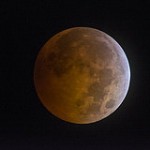[The following is a guest blog post from Dr. David Urban, Dean, Jennings A. Jones College of Business at Middle Tennessee State University]
The first American president I really remember was John F. Kennedy. He was in office for less than three years before he was assassinated in November 1963. But a lot of important things took place during that short presidency requiring President Kennedy to lead the country courageously. Among them was the American space flight program–the race to the moon.
Turning the clock back to early 1961, as President Kennedy took office, the Soviet Union was already far ahead of the United States in space exploration. Although lagging behind the Soviets in space was appalling to many Americans, the space race was about more than national pride. Recently declassified intelligence documents describe a real concern in Washington that the Soviets would parlay their leadership in space exploration into a strategic military advantage at the height of the Cold War.
In the spring of 1961, the United States finally launched an astronaut into space. The flight was short–only about 15 minutes–and the spacecraft didn’t achieve orbit around the Earth, something the Soviets had already done. Nonetheless, only a few weeks later, President Kennedy addressed a joint session of Congress and declared, “I believe this nation should commit itself, to achieving the goal, before this decade is out, of landing a man on the moon and returning him safely to the earth.” I was only six years old at the time, but I when I learned of President Kennedy’s words, I was overjoyed. I didn’t know the difference between a Democrat and a Republican (President Kennedy was a Democrat), but the President said we were going to the moon, and that was good enough for me.
On the other hand, place yourself in the position of one of the technicians, engineers, mission specialists or other personnel who had worked so hard to get a man in space for a 15-minute flight after enduring numerous failures. Many of them could not believe that President Kennedy had just raised the bar so high. They hadn’t even gotten an astronaut in Earth orbit, but now, President Kennedy had thrown down the gauntlet–they had to get astronauts safely to the moon and back, and they had about 8 and a half years to get it done.
And the Americans got it done. They got to the moon first, with a few months to spare.
What leadership lessons can we learn from this walk through history? The first is that great leaders are not afraid to set high goals. They ask, “How can we do more? How can we do better?” And they ask those questions even though many of the people they are leading would rather stay in their comfort zones. Great leaders everywhere share this common trait.
The second lesson is that great leaders can inspire people to do better than their best. When President Kennedy said Americans would get to the moon, he did it with a confidence and a firm belief in the great abilities of everyone involved in the space program. He knew they would get the job done, and as a result, they started to believe it too.
The third lesson is that great leaders reinforce their vision and its importance repeatedly until the vision becomes reality. A little more than a year after President Kennedy addressed the joint session of Congress, he gave a speech at Rice University. In that speech, he very eloquently reminded Americans why we were going to the moon. He said, “We choose to go to the moon…not because it is easy, but because it is hard.” And he recalled the story of Sir George Mallory, a famous British explorer who died trying to climb Mount Everest. In advance of the fateful climb, someone asked Sir George why he wanted to climb the great mountain. He replied, “Because it is there…” But as soon as he had finished the story, President Kennedy added, “And space is there. And we’re going to climb it.” And all of us believed him, just as we believed him when he addressed Congress the previous year.
President Kennedy did not live long enough to see the United States reach the moon and meet the challenge that he put before the country in 1961. But his leadership made possible a new age of science and technology and innovation that has been his legacy. We should all remember that legacy the next time we use our computers, tablets, or smartphones–the development of those products was a direct byproduct of the race for the moon.





Recent Comments